Brutal Interruption: Life in the Aftermath of Disaster
The Karantina residents who survived the devastating blast have no choice but to go on in what remains of their neighborhood.
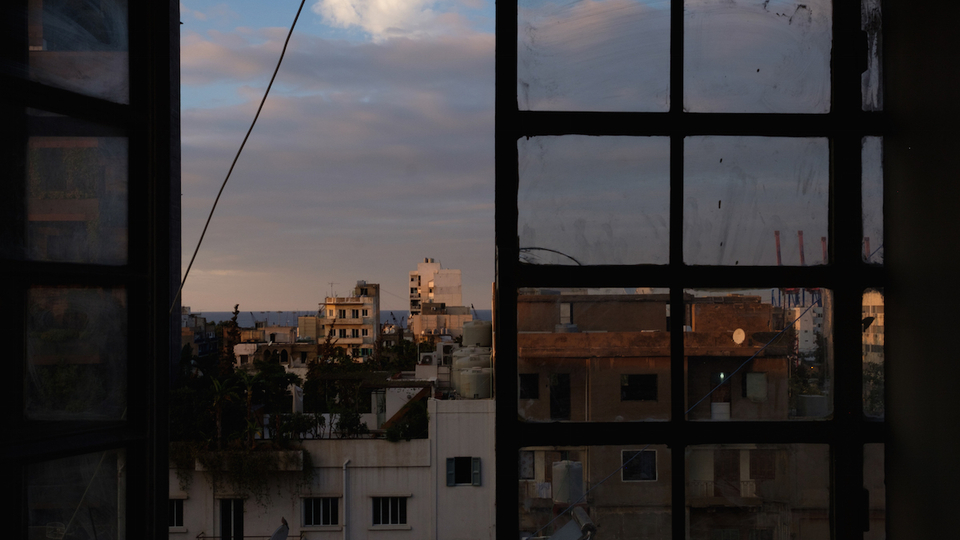
View from Charbel and Lena Nasser's new home in Mar Mikhael. In the distance, they can see their old home in Karantina, far too damaged they had to abandon it and the life they once shared in the neighborhood raising their children. For Charbel, it was also the loss of a place he called home for two decades. Mar Mikhael, Beirut. October 13, 2020.
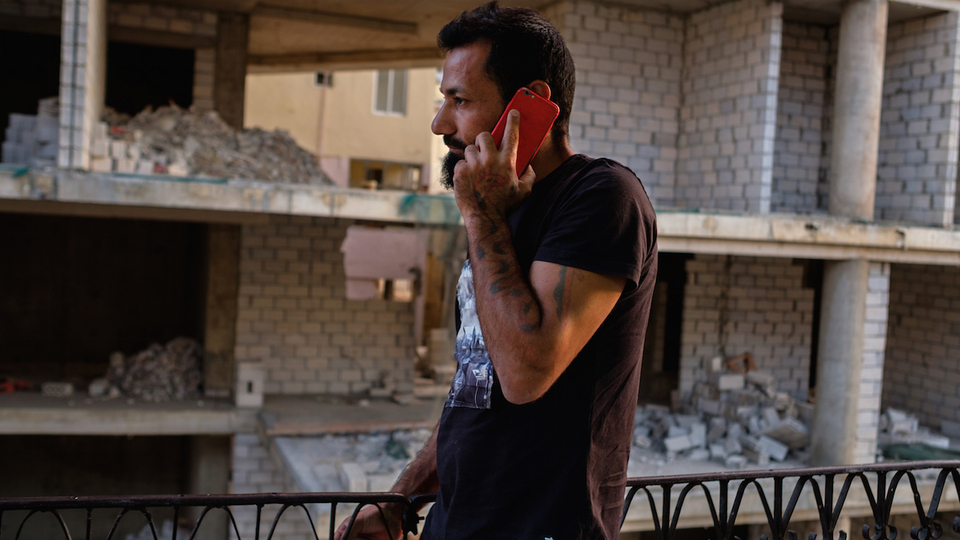
Charbel Nasser, 38, handyman and plumber, lost 10 kilos after the explosion at the Port of Beirut. Settled in his new home, he is finally regaining his appetite but is now struggling to find employment. Mar Mikhael, Beirut. October 13, 2020.
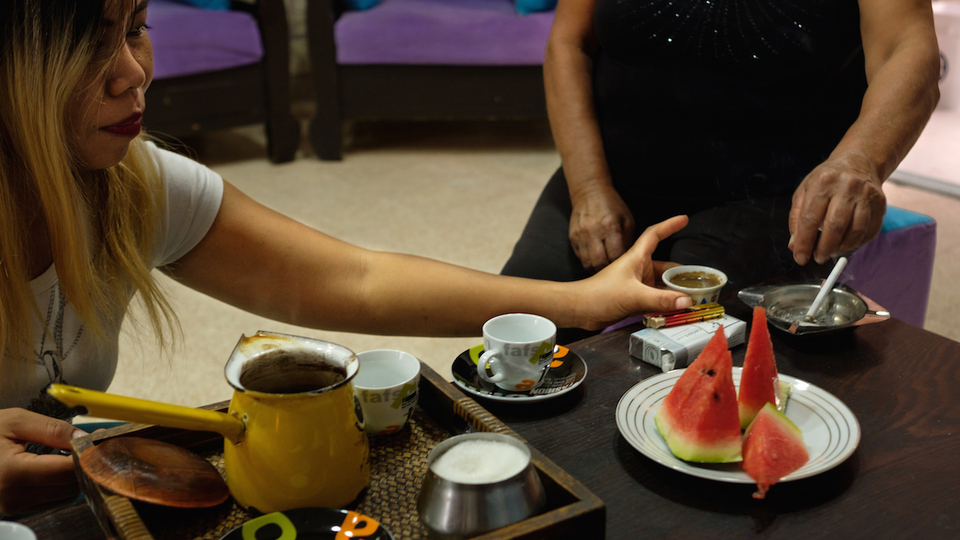
Lena Nasser, 39, and her mother-in-law, Khadija, 59, share coffee and watermelon after spending hours cleaning their new home in Mar Mikhael. Khadija survived the blast while shielding her grandchildren in their old home in Karantina. Mar Mikhael, Beirut. October 13, 2020.
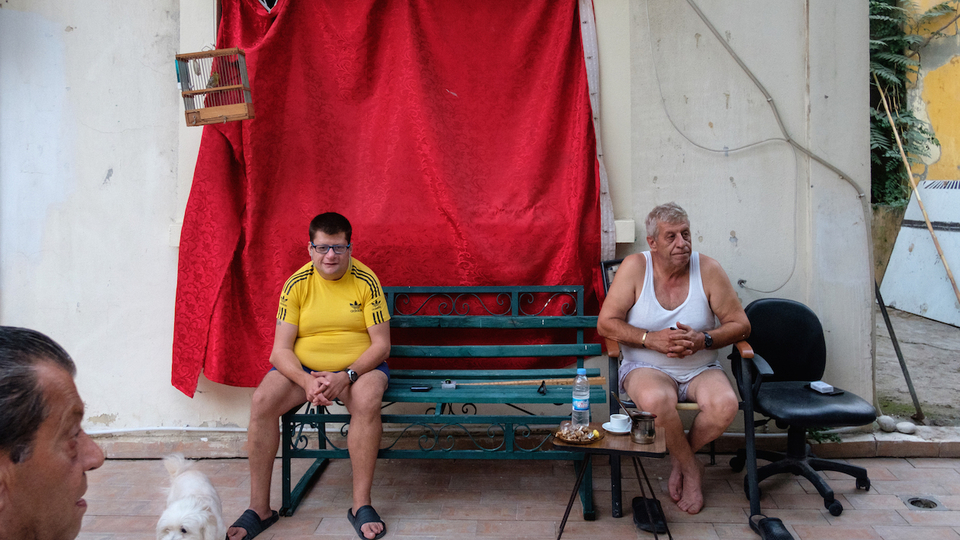
Maroun Saliba, 64, sits with his son Charbel, 33, and their dog Cookie in front of their home, welcoming visitors. Father and son have lived with anxiety since the explosion. Hailing from Karantina, Maroun intends to stay and hopes to regain some sense of safety. Karantina, Beirut. October 4, 2020.
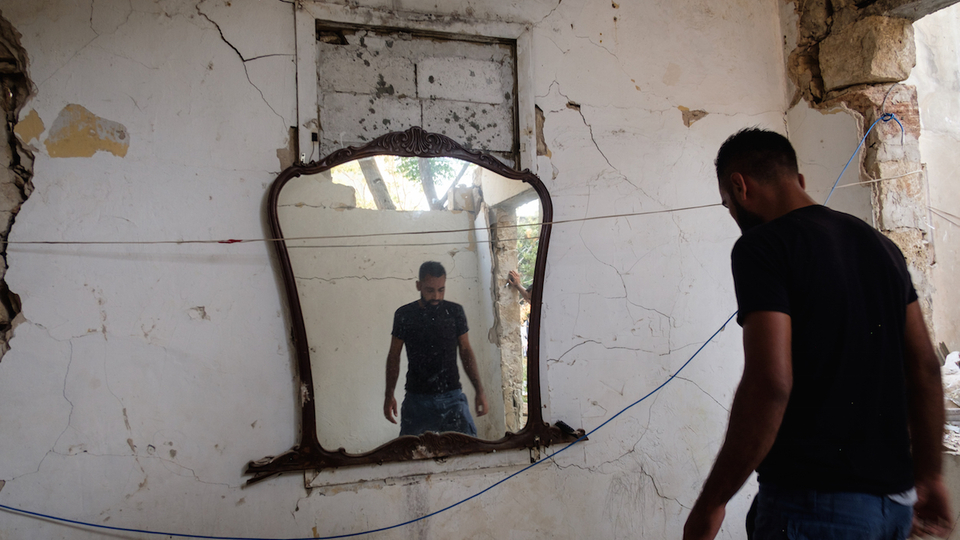
Nassr Shouwwakh Al-Qattan, 23, stands in the home he used to rent with his family while working at the port. He spent two days searching through the rubble for his family's identification papers while they moved in with relatives in Tripoli for shelter. He left Syria in 2009 and now again Karantina, as neither home nor means of livelihood were left for him. Karantina, Beirut. September 23, 2020.
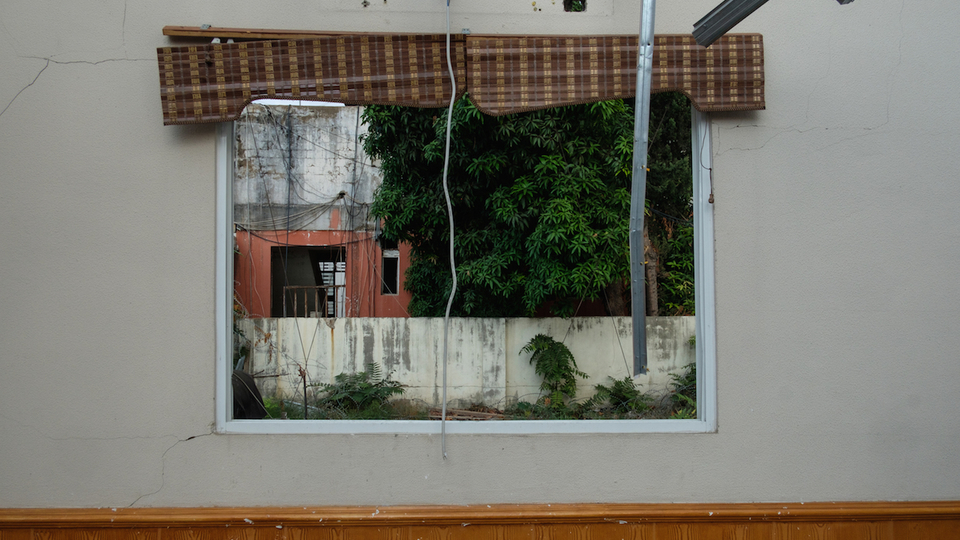
Window inside the heavily damaged Khalid Ibn al-Walid Mosque where residents still pray daily in seemingly safer parts as the mosque is rebuilt. Karantina, Beirut. September 23, 2020.
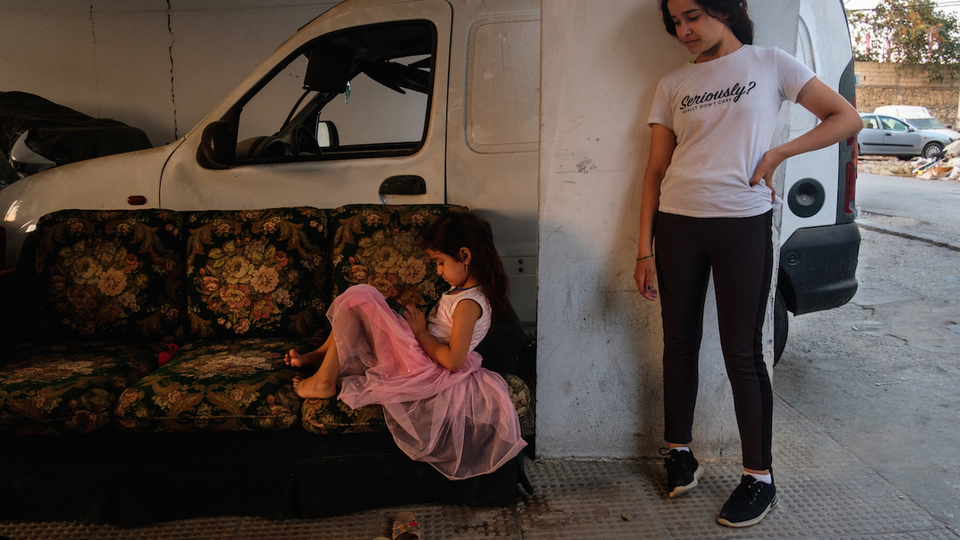
Aya, 13, and her sister Aline, 5, from Raqqa, Syria, spend time in the parking area outside their home where their father works as a building attendant. Both girls say their dream is to get an education, but Aya's schooling was interrupted after her school bus stopped servicing Karantina and her parents could not rely on public transportation. October 15, 2020.
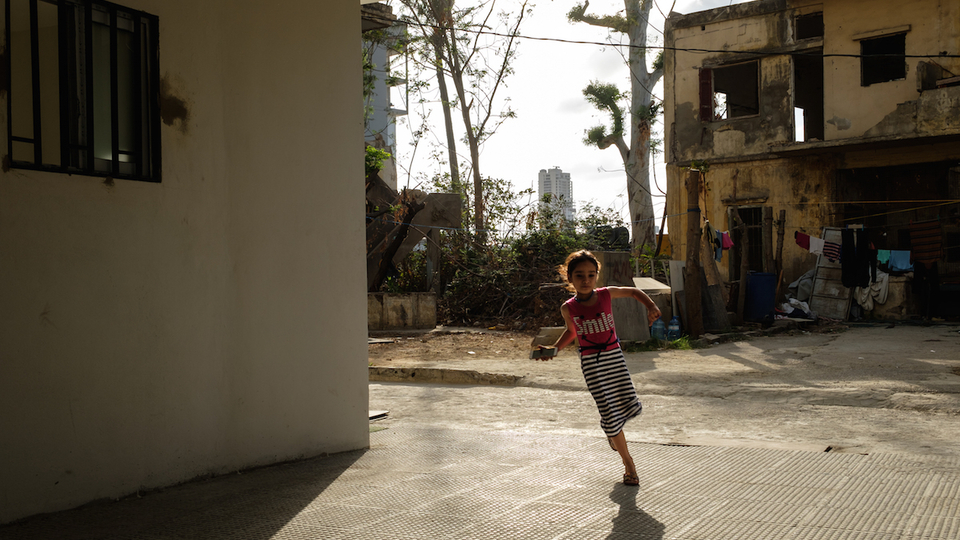
Aline, 5, plays in front of her home where the family of seven share one room. They lost everything in the blast, including appliances which they cannot replace due to the economic crisis. Their housing, hinging on her father’s employment as a building attendant, makes it nearly impossible for them to leave Karantina. October 15, 2020.
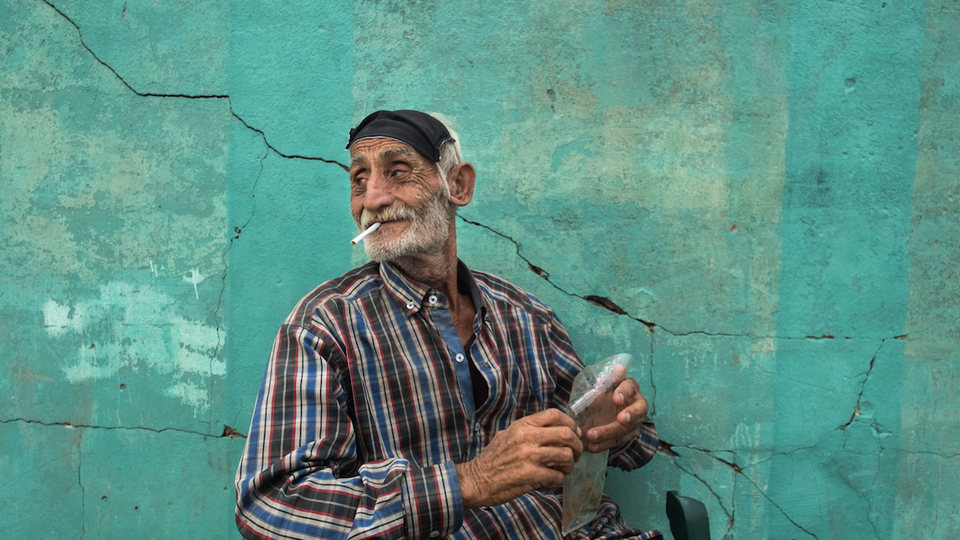
Ghassan Mohammad Barakat (aka Abou Ahmad), 68, takes a cigarette break. The small room he used to rent was destroyed. He has since moved into a shared space with fellow Syrians. He cannot leave Karantina because he depends on the neighborhood for work. It is where people know and hire him for gardening, painting, electrical work, and many other side jobs. September 23, 2020.
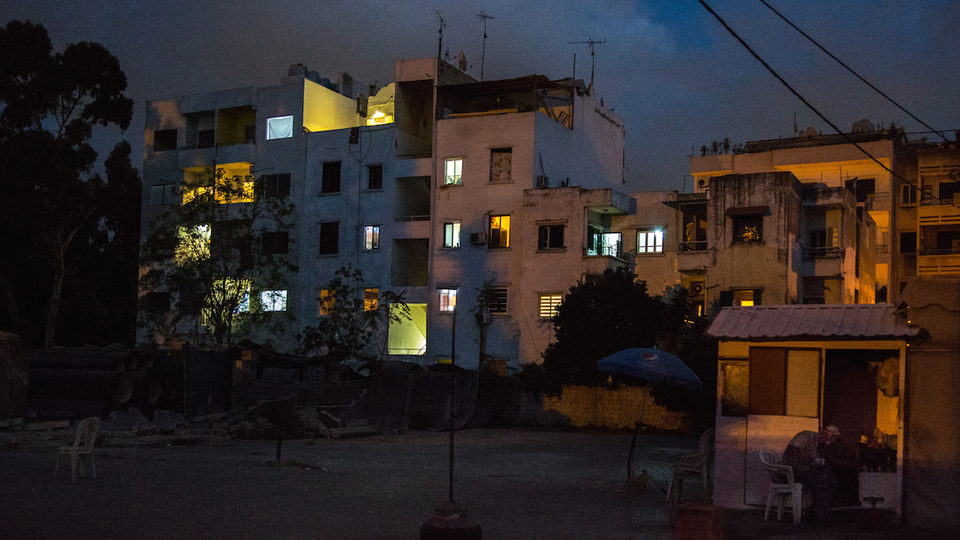
The Karantina residents who survived the devastating blast on August 4, 2020, have no choice but to go on in what remains of their neighborhood, partly out of love and partly out of necessity, or as Charbel says, "[choose] your neighbor before [choosing] your home." Karantina. Beirut. September 22, 2020.